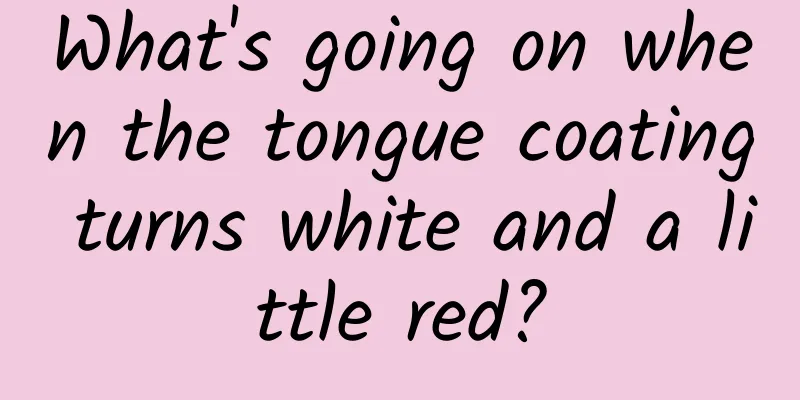Mild onychomycosis

|
If the patient has just contracted onychomycosis, the symptoms are not particularly serious at this time. If good treatment can be given in time, the onychomycosis can be prevented from becoming more serious. Mild onychomycosis requires regular treatment, such as the use of some antifungal drugs. Some topical medications have a good therapeutic effect and can avoid worsening of the symptoms and adverse effects on health. Let us learn about it. Mild onychomycosis You can tell whether your nails have onychomycosis by their color. Nails usually change color when they are injured or sick. In the early stages of fungal infection, small white or dirty yellow spots or flakes appear on the nail plate. The nails change color and lose their original luster, and depressions appear on the surface. If the nails have begun to turn black and show signs of thickening, it means that the onychomycosis is already quite serious and needs treatment as soon as possible. Onychomycosis, also known as onychomycosis and onychomycosis, is a common nail disease, accounting for more than half of nail diseases. It can occur on the fingernails and toenails, with toenails being more susceptible. There are five types of onychomycosis: 1. Distal subungual type: The fungus invades from the distal end of the nail, and then develops along the distal subungual nail bed to the subungual nail plate, which manifests as discoloration and thickening of the nail plate. In addition, keratin hyperplasia under the nail bed can lead to accumulation of subungual debris, and then gradually develops proximally. 2. Proximal subungual type: The fungus invades from the proximal end and develops along the root of the nail to the distal end, which manifests as unevenness and thickening of the proximal nail plate, and sometimes color changes. It often occurs in people with low immunity. 3. Superficial white nail type: The fungus invades the surface of the nail plate, forming white islands. In severe cases, the entire nail plate may turn white and dull. 4. Intraungural type: Fungi can cause infection inside the nail plate. The diseased nail is diffuse in color and texture, such as bluish-gray, and there is no keratinization on the surface of the nail plate. 5. Total nail destructive type: If the above type of onychomycosis is not treated in time, it may lead to the destruction of the entire nail. The harm caused by onychomycosis to people is very great to varying degrees. If treatment is delayed, it will cast a shadow on everyone's heart. If it is controlled and treated in time, it will be a simple problem, so friends with onychomycosis must pay attention to it. Several common treatments for onychomycosis: Use 40% urea ointment. The formula of urea ointment is: 40 grams of urea, 20 grams of lanolin, 5 grams of white wax, and vaseline added to 100 grams. This urea preparation is a strong keratinolytic agent. When using it, protect the skin around the diseased nail with gauze strips, fix it with tape, and then wrap it with gauze. Change the dressing once a day. Use a knife to separate the nail plate each time to separate the nail plate from the nail bed. Generally, the nail plate will soften and separate from the nail bed after 5 to 7 dressing changes. After separation, use small scissors to cut the nail plate into two halves, disinfect the area with iodine, and add a few drops of 1% to 2% procaine solution. After a few minutes, remove the diseased nail and scrape off the uneven keratinized material on the nail bed. Then apply a mixed ointment of equal parts of urea ointment and compound benzoic acid ointment. Change the dressing once a day until the new nail grows out completely. Take 20 cloves of garlic, remove the skin, chop or mash them, and put them in a wide-mouthed glass bottle with a stopper. Add 150 ml of 10% acetic acid (vinegar can also be used instead), soak for one day, and then it can be used. Soak the diseased nail in warm water for 5 minutes to soften the nail, use scissors to cut off or scrape off the diseased nail that can be removed, and insert the diseased nail into the garlic extract and soak it for 15 minutes. Take it 3 times a day and you will see results in a week. If not cured, another course of treatment can be given according to the above method. To save time, you can also apply garlic extract on the diseased nails with cotton wool. Soak or apply garlic extract. Sometimes the diseased nail will feel a little painful, but you should persist. This method is also effective if you have onychomycosis on your toenails. Garlic extract can be stored for a long time and used repeatedly. This method is also effective in treating tinea pedis. |
<<: Can removing moisture help you lose weight?
Recommend
Self-massage for frozen shoulder: how to make it effective
If you suffer from frozen shoulder, you don't...
What should I do if I have blood in my stool due to hemorrhoids?
The word hemorrhoids sounds uncomfortable, and ha...
How much water does a normal person drink in a day
Water is an important part of the human body. If w...
What causes water beans?
When children are young, they are prone to infect...
Can I take some anti-inflammatory medicine if I have sex before my period ends?
When you have your period, your uterus opens outw...
Symptoms of blood clots in the legs after cesarean section
For mothers who have undergone cesarean section, ...
Foods to avoid when coughing
When you have a cough, you should also pay attent...
Purulent eczema
Patients with purulent eczema should pay attentio...
Why is my baby's belly hot?
In our lives, babies are particularly prone to il...
What is hemp seed?
Huorenma is also called hemp seed, hemp thread, h...
Symptoms of internal hemorrhoids
Internal hemorrhoids are a type of hemorrhoids lo...
What to do if your butt hurts after an injection
When we were young, we often had to get injection...
Causes of lower gum recession
Gum recession is quite common in our daily life. ...
37 weeks lower abdomen like menstrual cramps
Delivery is possible at any time after 37 weeks. ...
How to recover from a knee injury
If the knee tissue is damaged, it is quite seriou...









